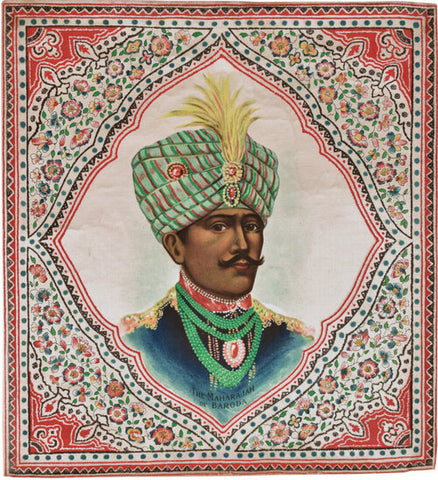
RAJASTHANI LEHERIYA
A VISIT WITH THE MASTER ARTISANS

I have had the honor of visiting the workshop of master leheriya artisans in Jaipur, India twice in the last several years. First in February of 2020 and again in September of 2022. Mr Neelgar’s family has been practicing the Rajasthani craft of leheriya for four generations.

A noticeable difference in between my first and second visit was the degree to which the senior Mr. Neelgar's son was involved. On my first visit he assisted his father in the showroom and by demonstrating certain processes. On my second visit the junior Mr. Neelgar was leading the the tour, guiding my buying process, negotiating the details while father looked on. It was interesting to witness the workshop in transition from one generation to the next. Not just in the craft itself, but also the business and client management side of things.

The workshop is located in Jaipur, the capital of Rajasthan which is a state in northern India. Rajashthan translates literally to "land of kings". Although the arid desert landscape is naturally sparse, the land of kings is rich in palaces and material culture. Dressing in leheriya textiles is one of many ways the Rajasthani people add color and pattern into their everyday life.

The term leheria (or leheriya) comes from the Rajasthani word for wave. This describes the visually rippled pattern created by tightly rolling the fabric and tying at intervals to resist the dye. The technique is applied to both cotton and silks. In India it has long been a popular choice for pagari (turbans) and women’s sarees, stoles and other fashions.

Antique portrait via sarajo.com
The process of rolling, tying, and dying fabric is repeated in order to create intensely colored intersecting pattern.

First the fabric is rolled and tied at intervals with string. This must be done very tightly.

Isha Ji (above) has been tying leheriya since she was a young girl. She was taught by her grandmother who practiced for 100 years (her whole life minus a few years at the beginning and end)

Next the tied fabric is placed in the dye bath. The fabric must be constantly manipulated during this application. The craftsmen work in a group, chatting as each works his own fabrics.

This process is repeated up to nine times to create multi-color designs of intersecting stripes. The fabric must be untied, washed and retied for each new color.



In recent years the studio has become 100% AZO free. This means a much safer work environment for the artisans.


I purchased some pieces at the workshop, seen above before being unrolled and pressed flat.
We finished some of these leheriya treasures into darling neckerchiefs. A few of these will be available in the webshop while supplies last.

Keep scrolling for more of our leheriya collection. Or read Waves of a Desert by Gaatha article even more about this stunning tradition.


Comments
Your work is so good, outstanding, wonderful ☺️👌
